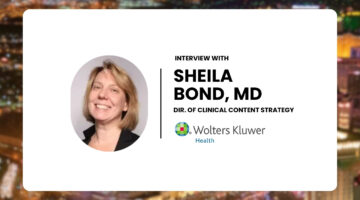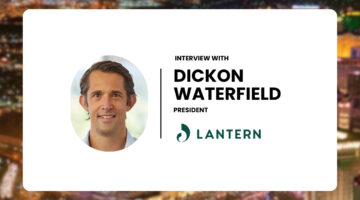Dexcom, the San Diego medical device maker of continuous glucose monitoring systems, and digital health company Livongo announced a partnership Monday that aims to bring Type 1 diabetes patients into the Livongo fold.
Livongo, based in Mountain View, California, has developed a software platform aimed at helping people manage chronic conditions like Type 2 diabetes, hypertension, prediabetes and behavioral health. With this partnership, current Livongo members who also happen to be users of the Dexcom G6 system will be able to view blood glucose data together with any connected device data supported on the Livongo platform. Employers and health insurance companies pay for the Livongo platform, which they then make available to employees and members.

Transforming Clinical Content with Ambient & Generative AI
Sheila Bond, MD, talked about the latest trends regarding integration of AI in healthcare.
Based on the data, Livongo would be able to send out push notifications, what the company called Healthy Nudges, to deliver personalized health insights in order to prompt healthy behaviors. The end goal is to reduce overall costs for employers and payers.
The partnership is set to go live sometime in the first quarter but the financial details of the agreement were not disclosed.
“Together, Dexcom and Livongo provide the opportunity for people with diabetes to easily access the leading technology and insights they need to stay healthy,” said Kevin Sayer, Chairman, President and Chief Executive Officer of Dexcom, in a news release. “Through a careful combination of clinical expertise, data science, and human coaching, the combined solution offers our users an even greater ability to understand themselves, their conditions, and what they need to get and stay healthy.”
Through Livongo’s platform, Dexcom would conceivably be able to attract Type 2 diabetes patients to switch from the world of glucometers and testing strips to continuous glucose monitoring, which has proved to provide better glycemic control for patients. That is the aim of not just Dexcom but the company’s rival, Medtronic given that the patient population in the Type 2 diabetes side is much larger.

How Lantern Delivers ROI Through Smarter Healthcare Navigation
Dickon Waterfield discusses why Lantern's navigation works.
While the partnership between Livongo and Dexcom is interesting, it remains to be seen what value the platform can bring to users. Livongo’s products are aimed largely at Type 2 diabetes patients – no surprises there given most diabetes patients in the U.S. are of the Type 2 variety. And those patients often have comorbidities including obesity and hypertension. Type 1 diabetes is a wholly different disease affecting younger patients who may not have the same concerns. Health coaches on the Livongo platform would most likely need to be trained on handling queries related to Type 1 diabetes.
Separately, while Livongo has shown that the use of its platform is associated with lower healthcare costs —$88 per member — the jury is still out on the value of employee benefits programs. In fact, most employers seem to continue to pay for health and wellness programs despite reporting low utilization and engagement from employees.
Still, Livongo has garnered a strong following. Per the company’s press releases, it boasts 770 customers, including more than 20 percent of Fortune 500 companies and four of the top seven health plans. Two of the nation’s largest pharmacy benefit managers – CVS Health and Express Scripts – are partners. In debuting on the stock market in 2019, Livongo heralded a coming of age for digital health companies, a feat that surely other companies would like to achieve.
Still, the company has performed the worst among three other digital health and health IT companies that also went public last year — Phreesia, Change Healthcare and Health Catalyst. Livongo’s stock debuted at $38.10 on July 25, the same day that Health Catalyst also launched its IPO. Livongo’s stock reached a high of $44.25 six days later before plummeting to $15.92 on Oct. 1. It currently trades around $27.







